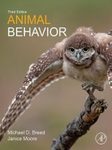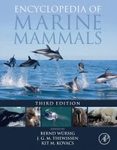About this book
Fish Physiology, Volume 36A: The Cardiovascular System: Design, Control and Function is the first book of a two- volume set. It not only provides comprehensive coverage of the current knowledge in this very active and growing field of research, but also highlights the diversity in cardiovascular morphology and function and the anatomical and physiological plasticity shown by fish taxa that are faced with various abiotic and biotic challenges. Updated topics in this important work include chapters on Heart Morphology and Anatomy, Cardiomyocyte Morphology and Physiology, Electrical Excitability of the Fish Heart, Cardiac Energy Metabolism, Heart Physiology and Function, Hormonal and Intrinsic Biochemical Control of Cardiac Function, and Vascular Anatomy and Morphology.
In addition, chapters integrate molecular and cellular data with the growing body of knowledge on heart and in vivo cardiovascular function, and as a result, provide insights into some of the most important questions that still need to be answered.
Contents
1. Heart Morphology and Anatomy / Jose Icardo
2. Cardiomyocyte Morphology and Physiology / Holly Alice Shiels
3. Cardiac Excitiabiity and its Autonomic Regulation / Matti Vornanen
4. Heart Physiology and Function / Anthony P. Farrell and Frank Melvin Smith
5. Hormonal and Autacoid Control of Cardiac Function / Sandra Imbrogno and Maria Cerra
6. Cardiac Energy Metabolism / Ken Rodnick and Hans Gesser
7. Form, Function and Control of the Vasculature / Erik Sandblom and Albin Grans
Customer Reviews
Biography
Dr. A. Kurt Gamperl is a comparative physiologist whose main research interest is to understand how environmental and physiological variables interact to affect fish biology. Central to this research are the role that blood oxygen transport, cardiac function, stress and humoral and/or biochemical factors play in mediating fish "performance" under varied environmental conditions.
Dr. Todd Gillis studied marine biology at the University of Guelph where he became fascinated by the biochemical and physiological adaptations that allow animals to live under extreme environments. He completed an MSc at Guelph looking at temperature adaptation in gill mitochondrial membranes from Arctic and temperate marine bivalves. His PhD, at Simon Fraser University, focused upon the mechanisms that enable cardiac function in trout at their comparatively low physiological temperature. This work specifically focused on the structure-function relationships of a protein called troponin C that enable it to work at low temperatures. As a NSERC Post-Doctoral Fellow in the lab of Dr. Mike Regnier in the Department of Bioengineering at the University of Washington, he worked on a variety of projects looking at the thin filament regulatory proteins and their role in controlling cardiac contractility. At the moment, his research program is focused upon the vertebrate heart and the mechanisms that regulate its function. The underlying theme of this work is the evolution of protein structure and function and the role this plays in determining the physiological scope of organisms.
Tony Farrell is a graduate of Bath University, where he was fortunate to study with Peter Lutz. His fortunes grew further when he moved in 1974 to Canada and the Zoology Department at the University of British Columbia to complete his Ph.D. degree under the superb tutelage of Dave Randall. In 2004, Tony returned to UBC when he accepted an endowed research chair in Sustainable Aquaculture. In between these positions at UBC, Tony was employed at the University of Southern California (PDF), the University of New Brunswick (sessional lecturer), Mount Allison University (first real job) and Simon Fraser University (moving through the ranks to a full professor). In addition to highly controlled laboratory experiments on fish cardiorespiratory physiology, Tony is committed to working on animals in their own environment. Therefore, his research on fish physiology has taken him on an Alpha Helix expedition to the Amazon, the University of Gothenburg and the Kristineberg Marine Research Station in Sweden, the Portobello Marine Biological Station in New Zealand, the University of Christchurch and Massey University in New Zealand, the Bamfield Marine Science Station and the Huntsman Marine Station in Canada, the University of Aarhus in Denmark, the University of Adelaide Charles and Darwin University in Australia, and to the Danish Arctic Marine Station on Disco Island in Greenland. These travels have allowed him to work and with many superb collaborators word-wide, as well as study the physiology of over 70 different species of fish. Tony has received a number of awards for his scientific contributions: an honorary degree from the University of Gothenburg in Sweden; Awards of Excellence from the American Fisheries Society for Fish Physiology, Conservation and Management; the Fry Medal from the Canadian Society of Zoologists; and the Beverton Medal from the Fisheries Society of the British Isles. The primary goal of his research program is to investigate environmental adaptations (both mechanistic and evolutionary) in relation to gas-exchange, acid-base balance and ion regulation in fish, integrating responses from the molecular, cellular and organismal level. The ultimate goal is to understand how evolutionary pressures have shaped physiological systems among vertebrates and to determine the degree to which physiological systems can adapt/acclimate to natural and anthropogenic environmental changes. This information is crucial for basic biology and understanding the diversity of biological systems, but much of his research conducted to date can also be applied to issues of aquaculture, toxicology and water quality criteria development, as well as fisheries management.





















![Madeira, Kanaren, Azoren: Fischführer [Madeira, Canary Islands, Azores: Fish Guide]](http://mediacdn.nhbs.com/jackets/jackets_resizer_medium/19/196500.jpg?height=150&width=105)
















